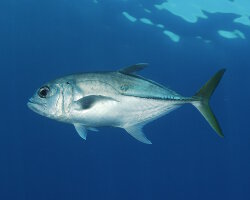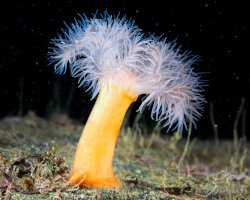Sealife guideThe yellowtail snapperOcyurus chrysurus

The yellowtail snapper (Ocyurus chrysurus)
Taxonomy
- Common name: Yellowtail snapper
- French name: Vivaneau queue jaune
- Spanish name: Rubia
- Scientific name: Ocyurus chrysurus (Bloch, 1791)
- Family name: Lutjanidae
- Order name: Perciformes
- Class name: Actinopterygii
Description
The yellowtail snapper is recognizable by its yellow band that runs along its body, widening from its head to its fully yellow tail. This yellow band separates the lighter, bluish-gray ventral part of its body from the darker, bluish dorsal part, which is scattered with large yellow spots. Its dorsal fin is also yellow.

The yellowtail snapper is recognizable by its yellow band that runs along its entire body !
The yellowtail snapper has an elongated body and a deeply forked tail fin, shaped like a 'V'.
The yellowtail snapper typically measures around 16 inches with a maximum size that can reach up to 31 inches for the largest specimens. Its weight is around 8.8 pounds.
Range
The yellowtail snapper is found in the tropical waters of the western Atlantic Ocean, from Florida in the north to the coasts of Brazil in the south, including the many islands of the Caribbean Sea such as the Bahamas,
Guadeloupe and more. The yellowtail snapper is also present in the waters of the Gulf of Mexico.
The yellowtail snapper is found in waters close to the surface but can also be found at depths of up to 230 feet and even at very deep depths reaching as far as 525 feet.
Habitat
The yellowtail snapper lives in shallow waters near coral reefs and along coastlines. The yellowtail snapper is rarely found near the seafloor but most often moves in the open water.
Diet
The yellowtail snapper primarily feeds at night, on a wide variety of animals found on the reef floor, such as crustaceans, worms, mollusks and smaller fish.
Reproduction
The yellowtail snapper exhibits sexual reproduction and reaches sexual maturity when its length approaches 12 inches.
Did you know ?
The yellowtail snapper is a reef fish widely found in the tropical and subtropical waters of the western Atlantic ocean and the Caribbean sea.
The yellowtail snapper is listed as many other marine species within The
IUCN Red List of threatened species. The yellowtail snapper appears in the
IUCN Red List since 2016 within the category Data Deficient !
Tips for observing
Occasionally, look up towards the surface to observe the yellowtail snapper, which rarely moves close to the bottom or the reef but rather in the open water, except when searching for food !
Within the same family
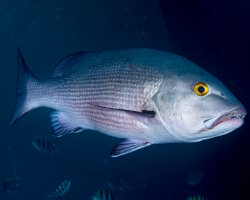
Two-spot red snapper
(Lutjanus bohar)
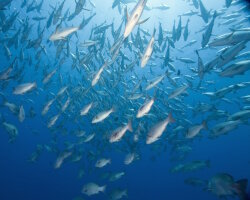
Mangrove red snapper
(Lutjanus argentimaculatus)
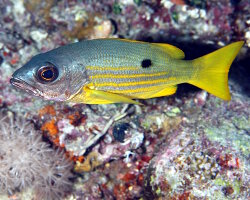
Blackspot snapper
(Lutjanus ehrenbergii)
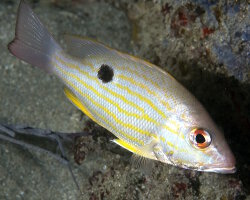
Lane snapper
(Lutjanus synagris)
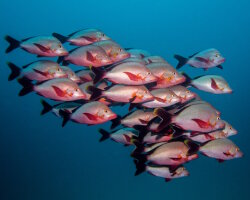
Humpback red snapper
(Lutjanus gibbus)
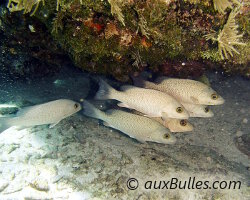
Gray snapper
(Lutjanus griseus)
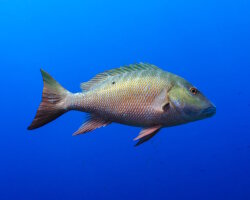
Mutton snapper
(Lutjanus analis)
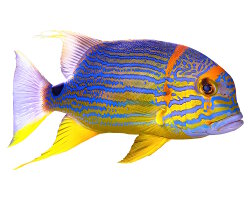
Sailfin snapper
(Symphorichthys spilurus)
Explore also
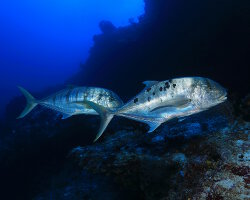
Golden trevally
(Gnathanodon speciosus)

Whitebelly damselfish
(Amblyglyphidodon leucogaster)
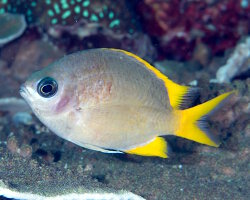
Yellow chromis
(Chromis analis)

Knife razorfish
(Cymolutes praetextatus)
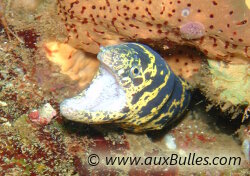
Chain moray
(Echidna catenata)

Scrawled butterflyfish
(Chaetodon meyeri)
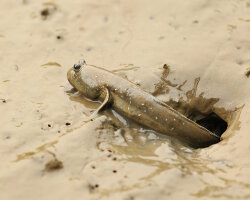
Great blue spotted mudskipper
(Boleophthalmus pectinirostris)
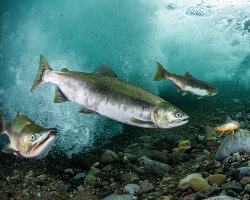
Pink salmon
(Oncorhynchus gorbuscha)
The marine species from Caribbean sea
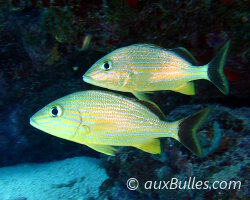
Blue striped grunt
(Haemulon sciurus)
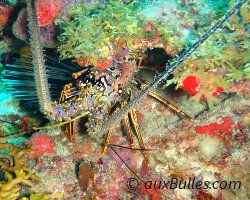
Caribbean spiny lobster
(Panulirus argus)
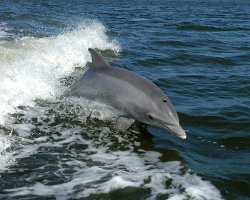
Common bottlenose dolphin
(Tursiops truncatus)
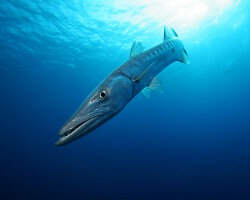
Great barracuda
(Sphyraena barracuda)
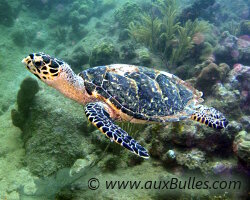
Hawksbill sea turtle
(Eretmochelys imbricata)

Mutton snapper
(Lutjanus analis)
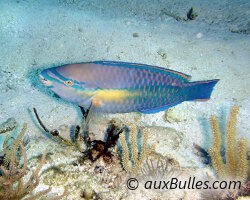
Princess parrotfish
(Scarus taeniopterus)
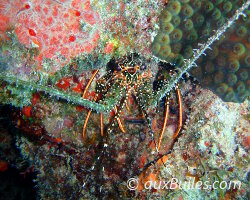
Spotted spiny lobster
(Panulirus guttatus)
Dive centers

'Les Ilets' dive center
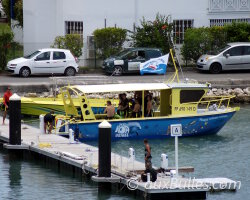
Noa dive center





























